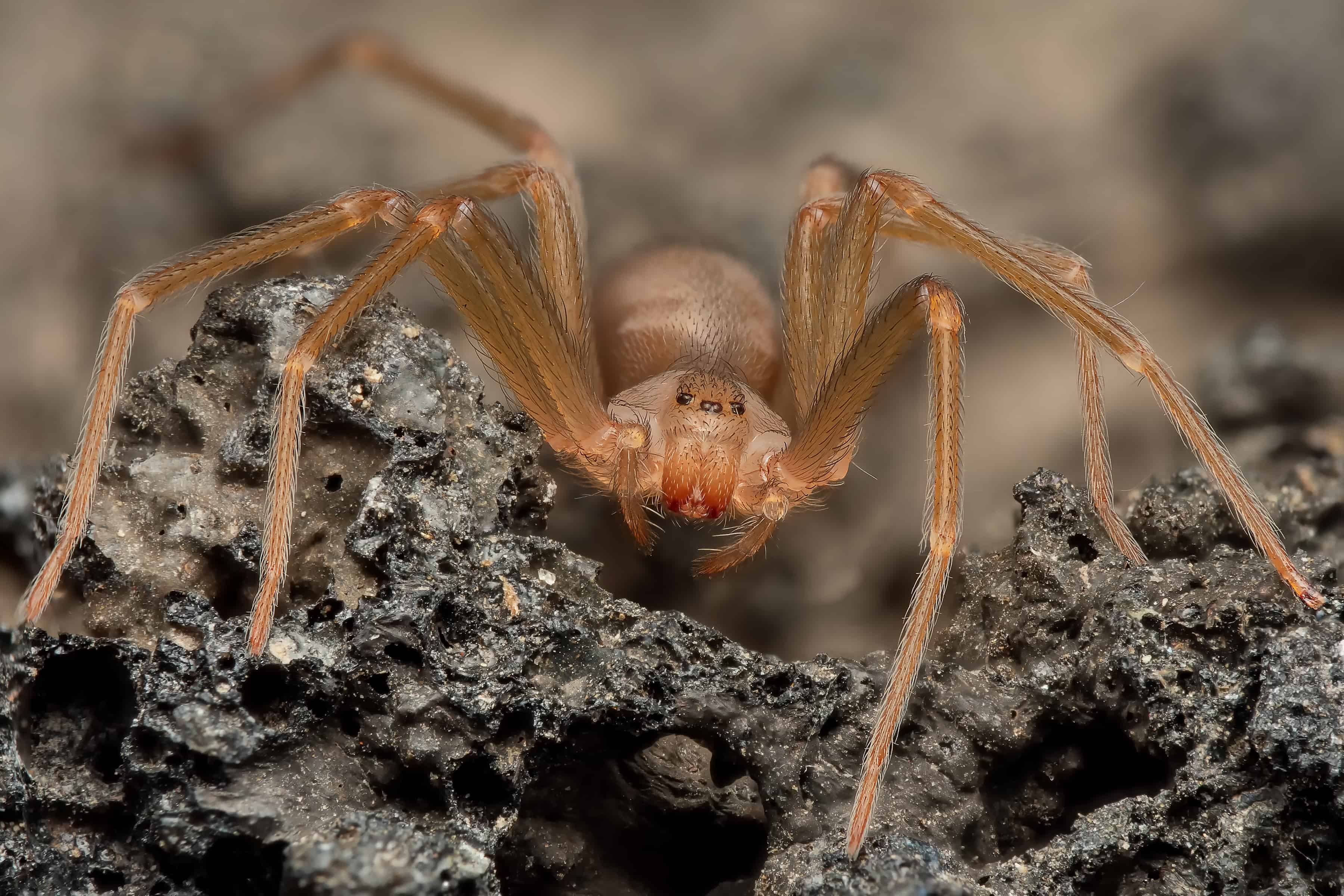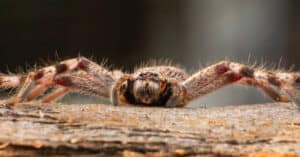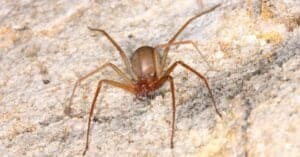The black widow and the brown recluse are two deadly spider species that you can find in Texas. You won’t want either of these arachnids to bite you. Throughout the State, one can find each of these types of spiders in and out of your home.
Today, we’re going to go over everything there is to know about brown recluse spiders in Texas. We’ll learn about why they come into your house, how to identify them, and how to get rid of them! Let’s talk about what these creepy crawlers look like.
What Does a Brown Recluse Look Like?
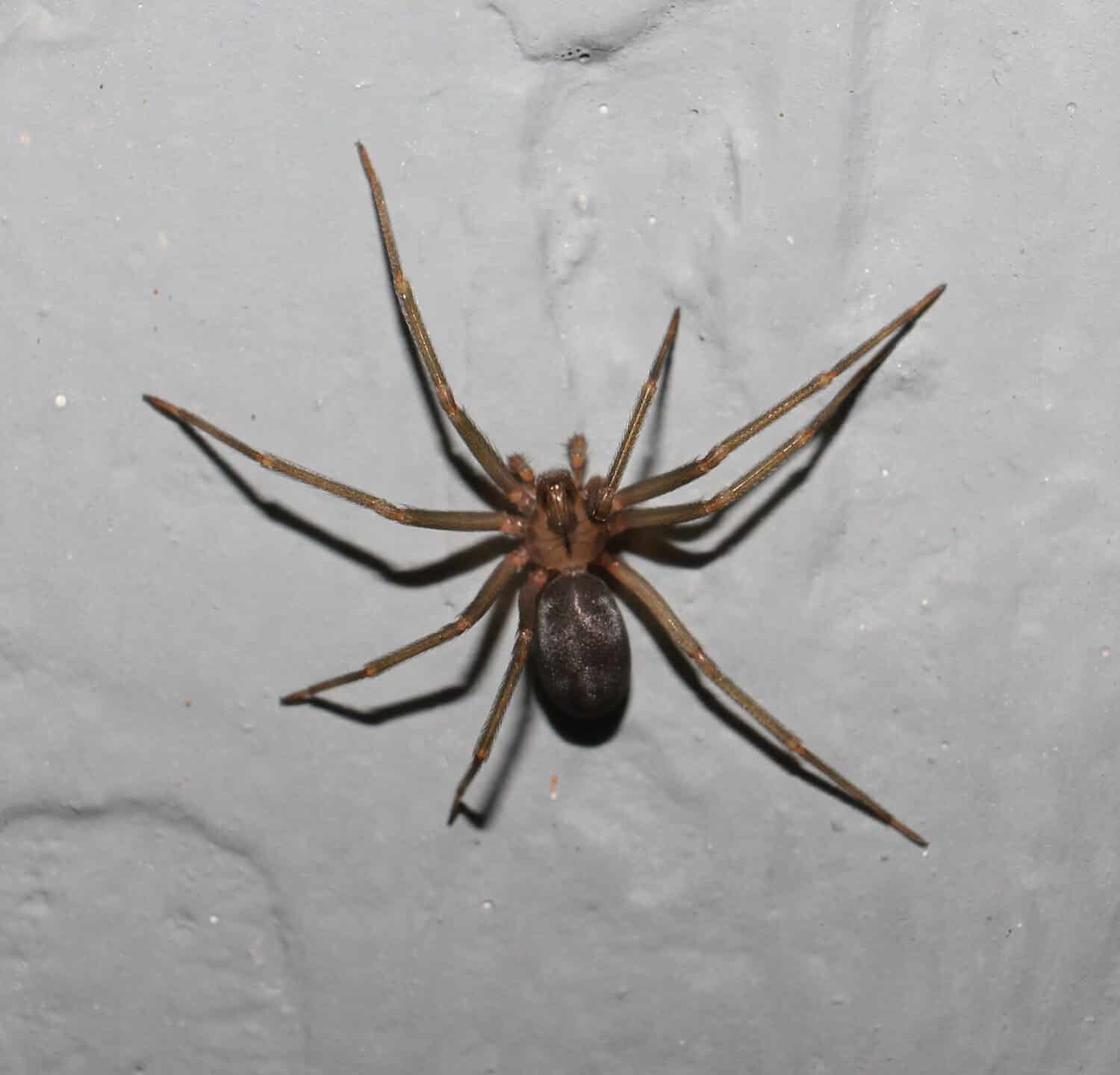
The violin shape of brown recluses can vary in size.
©Keith Davis/Shutterstock.com
Did you know in some parts of Texas this spider goes by the name the Violin spider? The term “violin spider” refers to the brown recluse’s distinctive marking, which is a violin-shaped area on its wide, nearly heart-shaped cephalothorax.
The rectangular abdomen has small gray hairs all over, and the overall hue is typically an olive color that may appear grey, yellow, or even brown. The legs of a brown recluse are long and thin, and they are darker than the rest of the body.
Male spiders are smaller than female recluses. Females are roughly a quarter of an inch long, excluding their legs. Surprisingly, their legs are about four times the length of their body!
Where Are Brown Recluses in Texas?

Brown recluse spiders are present in almost all of Texas, and El Paso is no exception.
©iStock.com/Sean Pavone
Unfortunately for our Texan readers, these bad boys can be found just about everywhere in the Lone Star State. There are several reports online that show brown recluse spiders are often in El Paso. On the contrary, these spiders are found a lot in the eastern portion of the state as well.
How Do Brown Recluses Get in Your Home?

These spiders are often in basements, cupboards, and boxes.
©Macrolife/Shutterstock.com
A brown recluse might be attracted to a home for one of two reasons. The brown recluse is going to feel comfortable at home if the outside of a house includes plants and overgrowth, a woodpile, building supplies, boulders, or other places to hide.
One can discover these spiders lurking in recesses, attics, basements, and cupboards within a house. They love quiet, dark, isolated spaces to seek refuge in and are most at ease in cluttered environments.
A profusion of hiding places is alluring to a recluse spider. However, brown recluses may still enter a house, no matter how well-organized it is or how well-kept the yard is. Every home offers protection from the outside world.
Coming Inside for Food
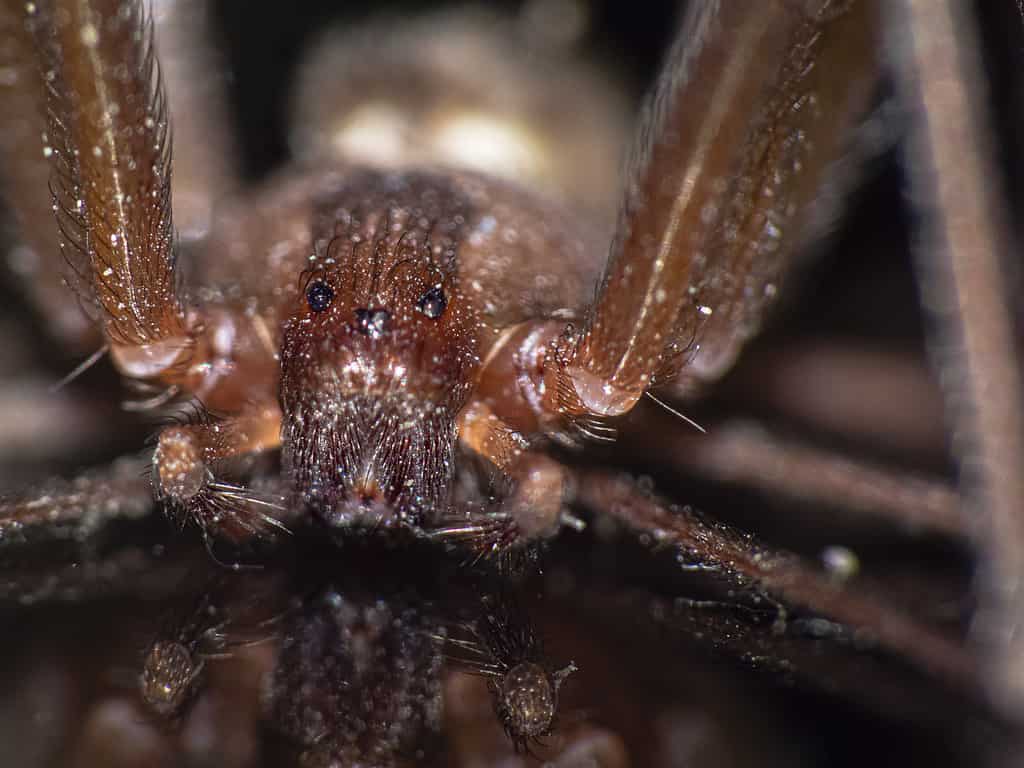
If small insects call your house their home, there is a greater chance that you’ll attract brown recluses.
©iStock.com/Wirestock
Because it hunts, the brown recluse spider finds an abundance of food to be very alluring. Small insects are their main source of nutrition. A brown recluse will find your residence more alluring depending on how many small insects you have.
Because of this, one of the most effective methods to render your house less appealing is to implement a consistent pest management strategy. Many households have a lot of pests that they are completely unaware of.
Pests that overwinter enter through crevices and conceal themselves in crawl spaces, cellars, attics, and wall voids. These spiders favor these areas for this additional reason. Roaches, caterpillars, silverfish, firebrats, grasshoppers, and other insects are all on the menu for a brown recluse.
Preventing Brown Recluse Spiders

Taking care of your yard can keep spiders away.
©iStock.com/MAsummerbreak
Due to their propensity for hiding, nearly every one of the most effective strategies to avoid getting bitten involves a thorough examination of probable hiding locations. Before putting clothes on, shake them out, particularly if clothing sits on the floor.
Never leaving clothes on the floor is an ideal way to lessen the chance of these spiders moving in. When handling boxes that were kept in a remote location, such as under a staircase, exercise caution.
You can also lessen the number of places to hide outside your house that tempt brown recluses to approach and search your walls for openings.
How to Get Rid of Brown Recluse Spiders

Lavender essential oils can ward off all types of spiders!
©iStock.com/Olivka888
There are a handful of tried and true methods that can kick these creepy crawlers to the curb. Like the majority of spiders, brown recluses dislike powerful odors like lavender. They also dislike various essential oils scents, including:
- Peppermint oil
- Tea tree oil
- Eucalyptus
Making your own spray to use in suspected spider-infested locations is simple. However, exercise caution: Avoid misting essential oils in areas where domestic pets can get to. According to the ASPCA, essential oils can be harmful to pets if they consume them, if they get on their coat, or touch the oils with their paws.
Utilizing Diamataceauos Earth is another approach to eradicating brown recluse spiders. Diatomaceous earth powder, which is composed of pulverized sedimentary rock, causes a spider’s exoskeleton to deteriorate and die from dehydration.
Additionally, it will eliminate the vermin that spiders feed on. Also recommended are glue traps! These can be put in awkward places, including closets or cabinets, and work well for trapping spiders. Sticky traps can capture multitudes of brown recluses if they are properly set. They might also snag the bugs that the spider may be dining on.
If all else fails, consider insecticides or a professional exterminator to handle an infestation.
Thank you for reading! Have some feedback for us? Contact the AZ Animals editorial team.

